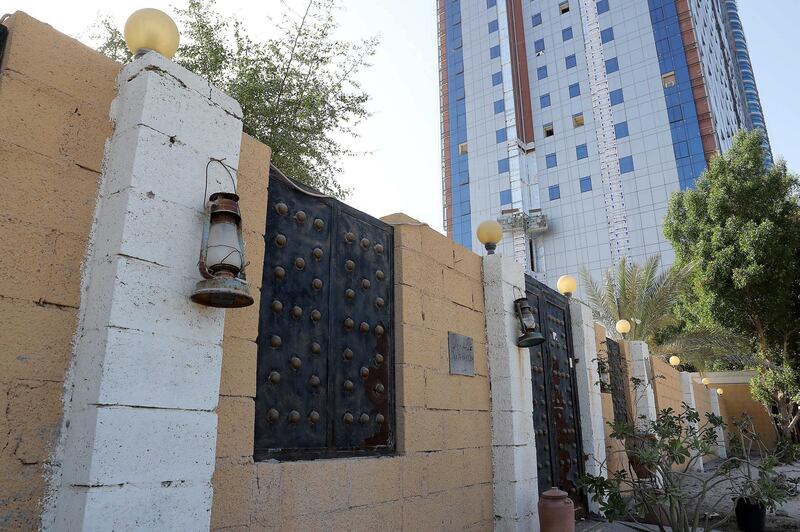For the last few months, a new landmark has come to define one of my regular Abu Dhabi journeys, and as it has come to dominate the patch of waste ground between the new Mina link and the old Mina Road, my anxiety levels have risen steadily with it.
An enormous glass and steel alp more than 30 storeys tall, the new residential tower looms over the low bulk of the Indian Social and Cultural Centre, the fire station and the pet souk near Mina Zayed, extending the rampart of buildings that define Abu Dhabi’s Corniche.
When residents finally move in, they’ll benefit from panoramic views of Mina’s dhow harbour on one side and the towers of Al Maryah Island on the other, but the object of my attention is more likely to be viewed as a blot on the local landscape.
Nestled in the surrounding powdery dust that now represents a prime real estate opportunity, sits a cluster of single storey, concrete dwellings.
To the drivers who park their cars in the land that surrounds them, the buildings must appear abandoned, but for the family that regards them as home nothing could be further from the truth.
This is the site of Bayt Al Jenaibi, a humble compound that arguably qualifies as one of the oldest inhabited homes in the capital. Originally built as housing for the employees of the energy plant that once stood on the site, the Bainoonah Power Company, the buildings date back to at least 1969, which is when Salima Ali Al Farsi’s husband first moved in.
Al Farsi joined him two years later, around the time of the country’s unification, and has lived in the house ever since, staying only during the day more recently because she has had a perfectly good modern home in the suburbs of Al Shamkha since 2008.
When I had the privilege of meeting Al Farsi in 2014, the proud mother of seven children insisted on making the 90-kilometre round-trip to return to Bayt Al Jenaibi on a daily basis, relying on one of her daughters to deliver her each morning and on another to take her home each night.
Few buildings speak to the Emirati experience of modernisation and urbanisation quite as eloquently as Bayt Al Jenaibi, and the fact that the house still stands, despite repeated threats of demolition, is testament to the love Al Farsi feels for it. She was 19 when she left her home in Sur, Oman, and came to live in the house with her husband, and despite the presence of her husband's parents and his sisters, it was the first house she was able to call her own.
“I love the freedom here, the sound of the birds, the quietness, the air in this house, the smell of this house,” she told me on my first visit. “Life here is precious for me. My children were born here, they grew up here, my family still gather here. I’ve tried to live somewhere else but I cannot. When I am here, I feel more relaxed.”
Convinced that the arrival of the new tower would have finally forced Al Farsi to abandon her home, I arrived outside the house this week and forced my way through a cordon of parked cars to the decaying door of the compound. Was there any chance that the matriarch would still be at home? Receiving no answer, I decided to call the number I still keep in my phone three years after our solitary meeting, and soon heard a gentle Arabic voice I immediately remembered. Unable to communicate, I was passed to an English-speaking family member who confirmed the news I had been longing to hear.
After 46 long years, Bayt Al Jenaibi is still Al Farsi's home. In its own way, Bayt Al Jenaibi is as much a monument as any of Abu Dhabi's forts and palaces, and I feel privileged to have witnessed the cherished family life that filled its precincts.
For the sake of Salima Ali Al Farsi’s peace of mind, and for something more precious than mere nostalgia, the city needs to do whatever it can to record and preserve this remarkable survivor, a material memory of an Emirati family and a way of life that, against all the odds, is still cherished and well-lived.
____________________
Read more from Nick:
[ Welcome to the neighbourhood – a catalyst for Abu Dhabi’s urban renaissance ]
[ Examining the past should be an uncomfortable experience ]
[ Abu Dhabi’s 8th Street is a perfect example of informal urbanism ]
____________________





